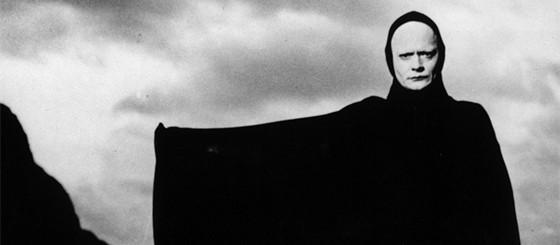In the grand tapestry of human storytelling, few threads are as vibrant and enduring as those spun by the art of cinema. Since the flickering shadows of early silent films danced across screens, the medium has evolved into a powerful force that shapes culture, challenges perceptions, and stirs the deepest emotions. The silver screen has been a canvas for visionaries, each film a brushstroke that paints the ever-changing landscape of society. In this curated exploration, we journey through time to spotlight the most influential films in cinema history—masterpieces that not only defined their eras but also transcended them, leaving indelible marks on the art form itself. These are the cinematic experiences you simply cannot afford to miss, each a testament to the transformative power of film and its ability to capture the human spirit in all its complexity.
Cinematic Masterpieces that Shaped Modern Storytelling
Throughout the history of film, certain works have transcended mere entertainment to become cornerstones of modern storytelling. These cinematic masterpieces not only captivated audiences but also redefined the possibilities of narrative and visual art. Visionary directors and innovative screenwriters crafted tales that expanded the boundaries of the medium, leaving an indelible mark on both filmmakers and viewers alike.
- “Citizen Kane” (1941) – Orson Welles’ magnum opus revolutionized narrative structure and visual storytelling with its groundbreaking use of deep focus and non-linear narrative.
- “The Godfather” (1972) – Francis Ford Coppola’s epic tale of family and power set new standards for character development and thematic depth in cinema.
- “Pulp Fiction” (1994) – Quentin Tarantino’s bold narrative style and dialogue-driven storytelling redefined genre conventions and inspired a generation of filmmakers.

Visionary Directors and Their Unforgettable Contributions
In the ever-evolving tapestry of cinema, certain directors stand as titans, their vision and creativity reshaping the art form itself. Stanley Kubrick, with his meticulous attention to detail, delivered films like 2001: A Space Odyssey that not only challenged the norms of storytelling but also expanded the horizons of visual and thematic exploration. Alfred Hitchcock, the master of suspense, crafted unforgettable narratives that remain etched in the collective psyche, exemplified by classics such as Psycho and Vertigo. Their contributions have set a gold standard, inspiring generations of filmmakers to push the boundaries of what cinema can achieve.
- Akira Kurosawa: Revered for his epic storytelling and profound humanism, films like Seven Samurai have influenced a multitude of genres across the globe.
- Federico Fellini: With a flair for the surreal and a penchant for the fantastical, Fellini’s works such as La Dolce Vita continue to captivate and inspire.
- Ingmar Bergman: His exploration of existential themes and the human psyche in films like The Seventh Seal has left an indelible mark on world cinema.
These visionary directors, through their groundbreaking films, have not only left an indelible impact on the industry but have also enriched the cultural fabric of storytelling, offering timeless narratives that continue to resonate with audiences around the world.

Iconic Performances that Redefined Acting Standards
In the world of cinema, certain performances have transcended mere acting, setting new benchmarks for the craft and altering the trajectory of storytelling. These performances are etched in the annals of film history, inspiring generations of actors and filmmakers alike. From breathtaking method acting to transformative character portrayals, these roles have left an indelible mark on the industry.
- Marlon Brando in A Streetcar Named Desire – Brando’s raw and magnetic portrayal of Stanley Kowalski introduced method acting to a mainstream audience, revolutionizing the way characters were brought to life on screen.
- Meryl Streep in Sophie’s Choice – Streep’s hauntingly emotional performance showcased her unparalleled range and commitment, solidifying her status as one of the greatest actors of all time.
- Heath Ledger in The Dark Knight – Ledger’s chilling embodiment of the Joker redefined the superhero genre, earning him a posthumous Academy Award and setting a new standard for villainous roles.
- Daniel Day-Lewis in There Will Be Blood – Known for his immersive method acting, Day-Lewis delivered a powerful and unforgettable performance that captured the complexities of ambition and greed.

Timeless Visuals and Groundbreaking Special Effects
In the ever-evolving world of cinema, some films stand out not just for their storytelling but for their revolutionary use of visuals and special effects that have forever changed the landscape of filmmaking. These masterpieces are not just movies; they are visual symphonies that have pushed the boundaries of imagination and technology. From the ethereal landscapes of “Avatar” to the mind-bending realities of “The Matrix”, these films have introduced audiences to worlds previously thought impossible. Each frame is meticulously crafted, drawing viewers into a seamless blend of reality and fantasy.
- 2001: A Space Odyssey (1968): This Stanley Kubrick classic broke new ground with its pioneering use of practical effects and stunningly realistic depictions of space.
- Jurassic Park (1993): Steven Spielberg’s epic brought dinosaurs to life using groundbreaking CGI, setting a new standard for visual effects in the industry.
- Star Wars: Episode IV – A New Hope (1977): George Lucas redefined science fiction with innovative special effects and a new era of cinematic storytelling.
- Blade Runner (1982): Known for its noir aesthetics and atmospheric visuals, this film has influenced countless directors and remains a benchmark in visual storytelling.
These films are not just entertainment; they are landmarks in the history of cinema, each leaving an indelible mark on the art of filmmaking. Whether through breathtaking CGI, innovative practical effects, or imaginative set designs, they have set the standard for what is visually possible on screen.



